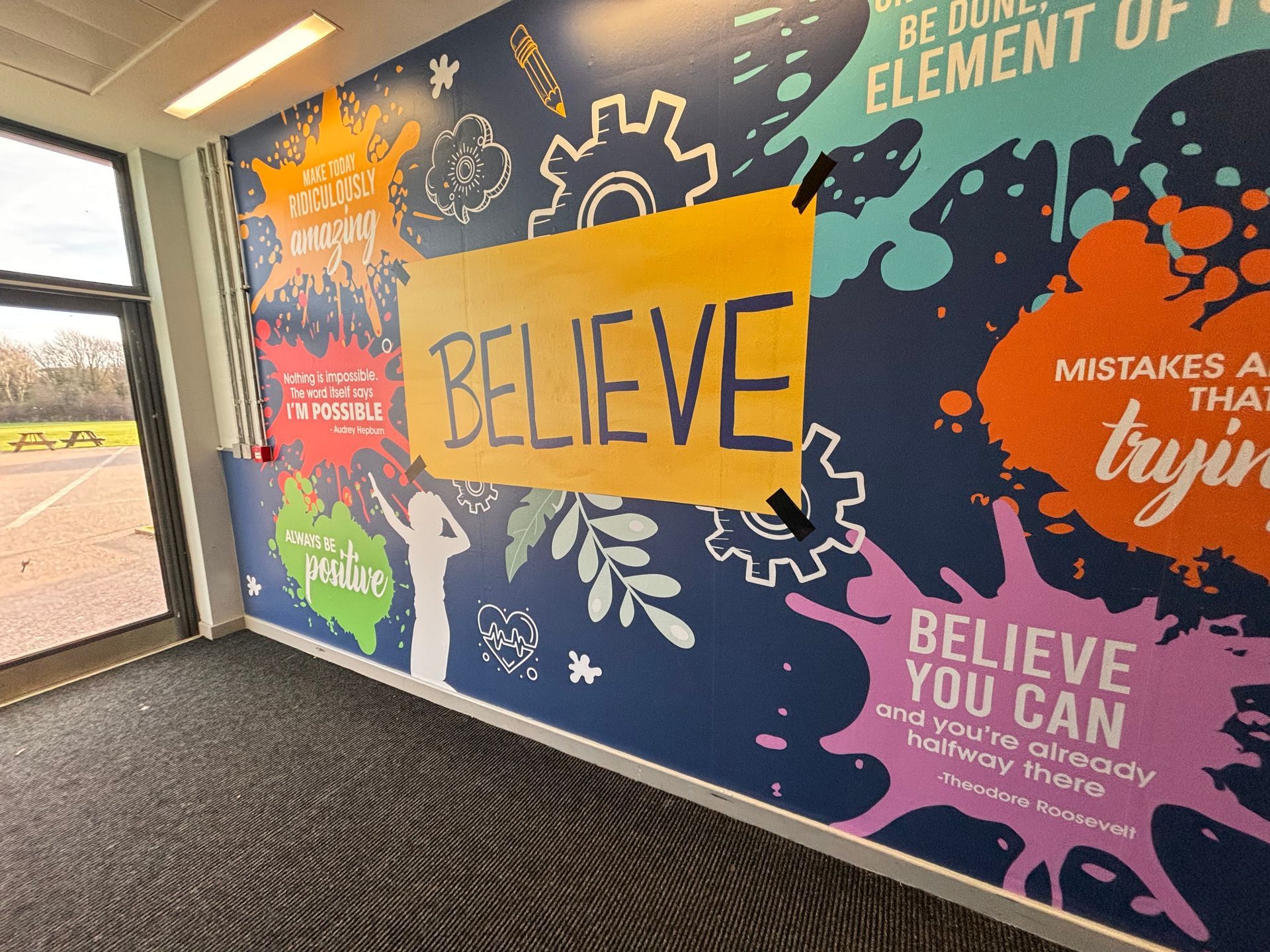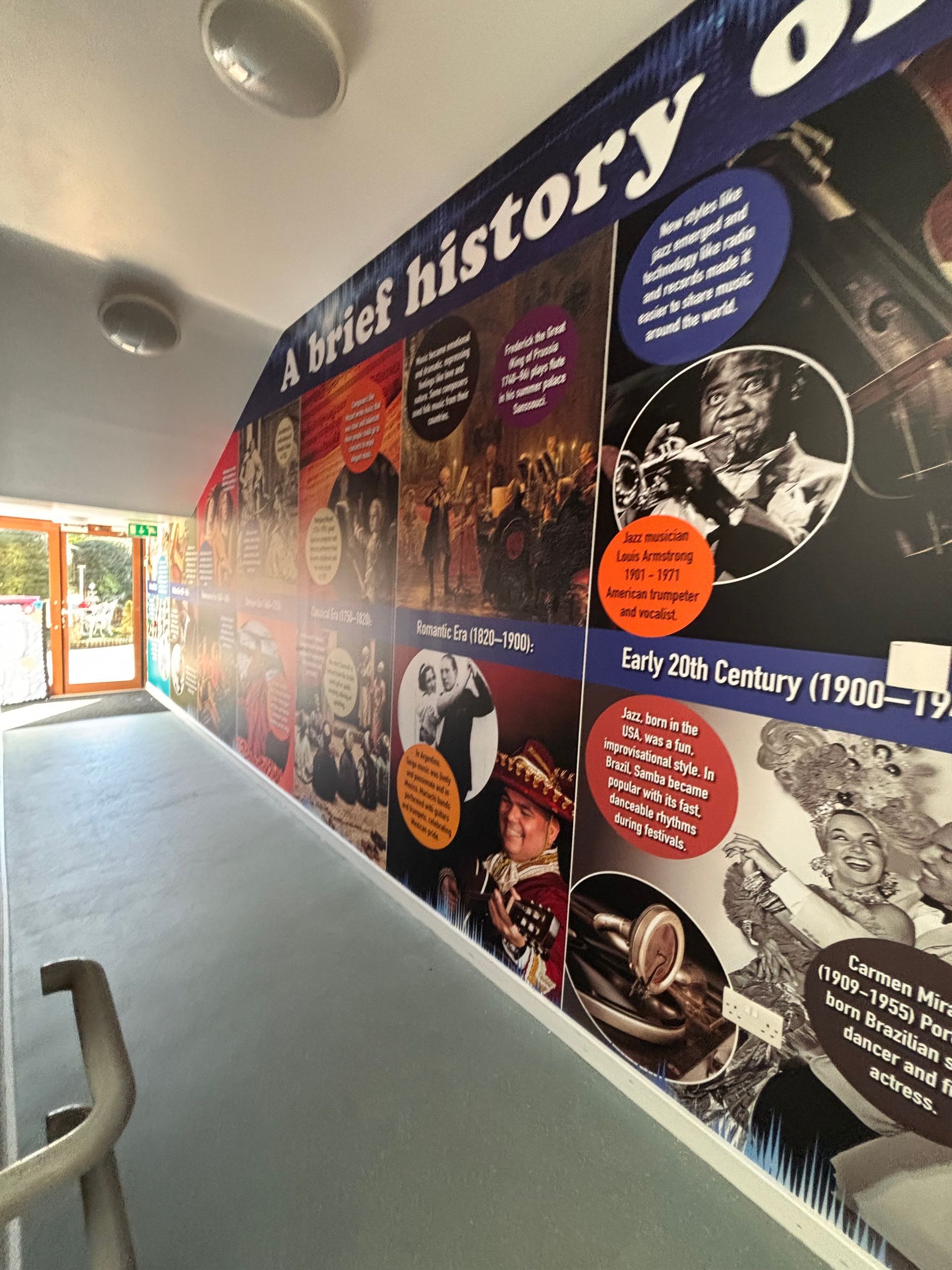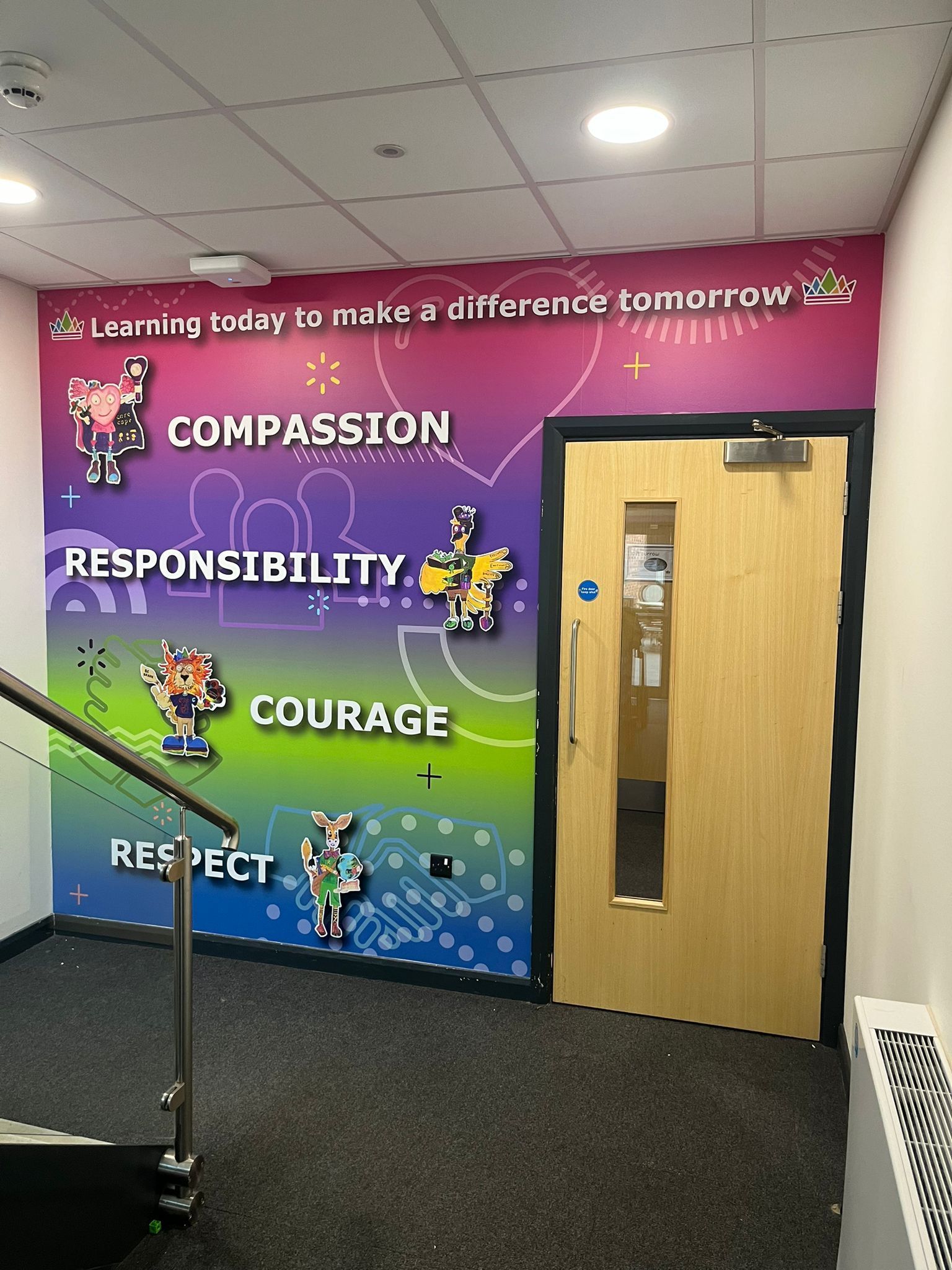Looking for other items, visit CUBED GROUP
Impact on pupils 6
Using wall graphics that align with the curriculum can help strengthen the learning process by providing support for what students are being taught. By working with teachers, these designs can be customised to match the lessons, adding visual aids that complement educational plans.

To effectively integrate curriculum-aligned wall graphics into settings, consider the steps;
Steps for Aligning Wall Graphics with the Curriculum
Incorporating Science Lab Graphics
1. Collaboration with Teachers;
- Initial Discussions: Conversed with educators and curriculum developers to grasp the covered topics and units.
- Continuous Communication: Establish a communication channel to keep abreast of subjects and themes suitable for visual representation.
2. Mapping Curriculum Objectives;
- Identifying Key Subjects: Collaborate with teachers to pinpoint subjects that would benefit from support in each discipline.
- Timeline Coordination: Develop a schedule outlining when specific topics will be taught throughout the year. Plan installations accordingly.
3. Integrating Design Elements;
- Visual Support: Create graphics that reinforce lesson content. For instance, during a biology lesson on ecosystems, wall graphics could showcase illustrations of biomes and food chains.
- Tools: Utilise visuals such as diagrams, charts and infographics to simplify ideas, aiding in better comprehension and retention.

History:
- Timelines: Comprehensive timelines of historical periods, including key events, figures, and cultural milestones.
- Maps: Maps showing territorial changes, trade routes, and exploration paths should include QR codes linking to additional resources and historical documents.
- Biographies: Portraits and biographies of significant historical figures. Integrate AR to bring their stories to life with audio narratives and videos.
Language Arts:
- Literary Periods: Graphics depicting different literary periods and their characteristics. Include notable authors and works from each period.
- Grammar and Syntax: Visual aids for grammar rules, sentence structures, and punctuation. Use color-coded diagrams to simplify complex regulations.
- Creative Writing: Story maps and prompts to inspire creative writing. Include spaces for students to add their contributions.
Art:
- Art Movements: Visual timelines of art movements featuring key artists and their masterpieces. Highlight different techniques and styles.
- Technique Guides: Step-by-step guides for various art techniques, from basic drawing to advanced painting methods. Use actual student artwork as examples.
- Gallery Space: Dedicated areas for rotating student exhibitions, showcasing their work and encouraging artistic expression.
Interactive and Sustainable Features
Interactive Elements:
- AR Integration: Incorporate AR markers that link to additional content like videos, animations, and interactive quizzes.
- Writable Surfaces: Use dry-erase or chalkboard paint to create areas where students can write, draw, and solve problems.
- Touch-Activated Displays: Install touch-sensitive panels that respond to interaction, providing instant feedback and additional information.
Sustainable Practices:
- Eco-Friendly Materials: Choose sustainable materials for graphics production, such as recycled paper and non-toxic inks.
- Reusable Designs: Create modular and reusable graphic elements that can be updated or rearranged to reflect new curriculum topics.
- Tree Planting Initiatives: Highlight your environmental initiatives, like planting a tree for every graphic installed, to promote sustainability and ecological responsibility.
Implementation Strategy
1. Pilot Programs:
- Start with pilot programs in a few classrooms or subjects to test the effectiveness of the graphics.
- Gather feedback from teachers and students to refine the designs and implementation process.
2. Professional Development:
- Offer training sessions for teachers on effectively integrating wall graphics into their lesson plans.
- Provide resources and support to help educators make the most of these visual aids.
3. Evaluation and Feedback:
- Regularly evaluate the impact of the wall graphics on student engagement and learning outcomes.
- Collect teacher and student feedback to continuously improve and adapt the graphics to meet educational needs better.
By aligning wall graphics with the curriculum, you can create a visually stimulating and supportive learning environment that reinforces lesson plans, aids comprehension, and enhances student engagement across all subjects.











